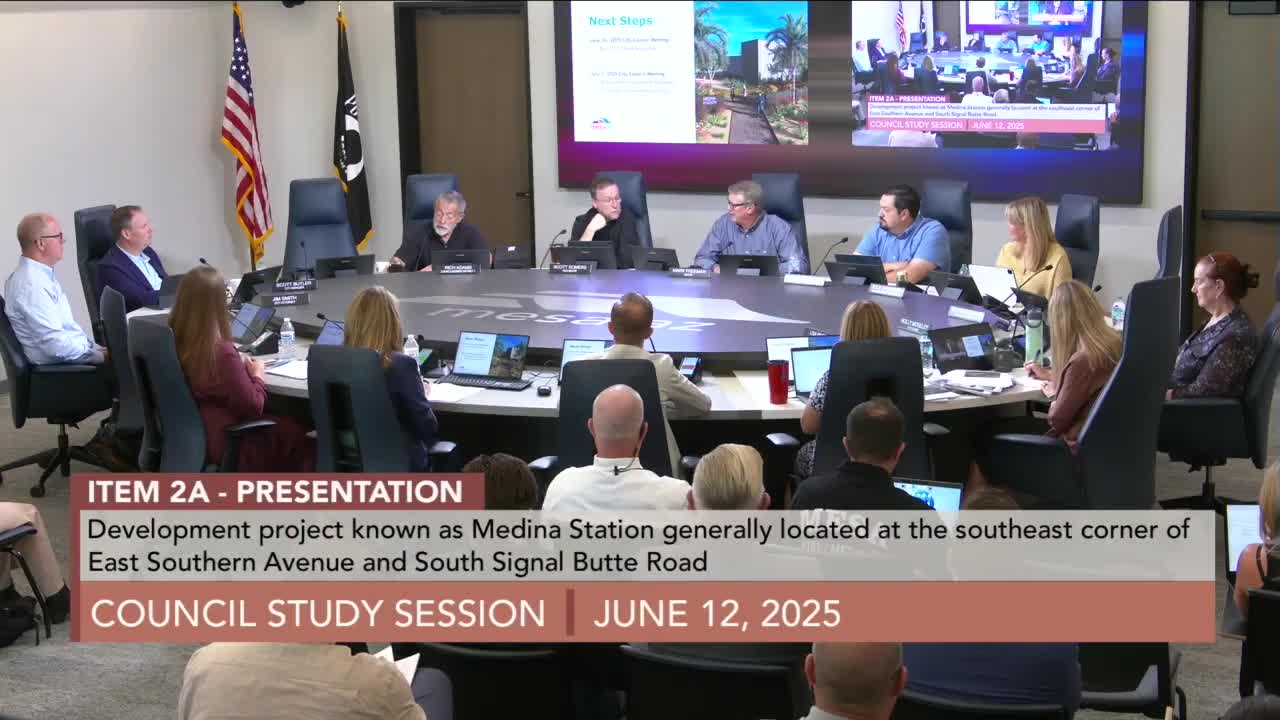Mesa plans $170M overhaul of Arizona Museum of Natural History to boost tourism
June 12, 2025 | Mesa, Maricopa County, Arizona
Thanks to Scribe from Workplace AI , all articles about Arizona are free for you to enjoy throughout 2025!

This article was created by AI using a video recording of the meeting. It summarizes the key points discussed, but for full details and context, please refer to the video of the full meeting. Link to Full Meeting
As the meeting commenced, the atmosphere was charged with anticipation. Council members and city staff engaged in a spirited dialogue about the Medina Station, a mixed-use development that aims to introduce a variety of dining options to East Mesa, an area currently underserved in higher-end restaurant choices. The developers expressed their commitment to the project, highlighting the potential for economic growth and community enhancement. "This really offers an opportunity to prove up this part of Mesa," one developer noted, emphasizing the importance of attracting quality restaurants to the region.
The Vice Mayor echoed these sentiments, acknowledging the challenges faced in East Mesa, where pockets of lower-income residents exist alongside higher wage earners. "Getting these in early and having this kind of development is why we did the study," he remarked, underscoring the strategic planning behind the project. The council also discussed the importance of ensuring that new restaurants do not compete with existing establishments in nearby areas, a concern that reflects the city's careful approach to economic development.
Transitioning to the AZMNH, the discussion took on a more introspective tone as museum officials presented findings from a comprehensive report on the facility's current state and future needs. Simon Tiffany Adams, the museum's director, painted a vivid picture of the museum's potential, likening it to a "nuclear submarine under the Arctic," ready to emerge and make a significant impact. He emphasized the museum's unique position in Arizona's cultural and geological history, noting that it serves as a repository of knowledge that could elevate the city on a national stage.
The report highlighted critical deficiencies in the museum's current infrastructure, including a lack of visitor amenities and educational spaces that meet modern expectations. "The facility is not up for purpose anymore," Adams stated, calling for a significant investment to either renovate the existing building or construct a new facility altogether. The projected costs for these options range from $84 million for renovations to $170 million for a new building, raising questions about funding sources and community support.
Council members expressed enthusiasm for the museum's potential while acknowledging the financial challenges ahead. Discussions about leveraging public and private funding, including potential naming rights and sponsorships, were met with optimism. "This is not just a Mesa project," one council member remarked, emphasizing the museum's statewide significance and the need for a collaborative funding approach.
As the meeting drew to a close, the council was left with a clear directive: to explore the next steps for both the Medina Station and the AZMNH projects. With a combined vision for economic growth and cultural enrichment, Mesa stands at a crossroads, poised to enhance its identity as a vibrant community hub. The future of these initiatives will depend on strategic planning, community engagement, and a commitment to fostering a rich cultural landscape that benefits all residents.
Converted from Council Study Session - 6/12/2025 meeting on June 12, 2025
Link to Full Meeting
Comments
View full meeting
This article is based on a recent meeting—watch the full video and explore the complete transcript for deeper insights into the discussion.
View full meeting


